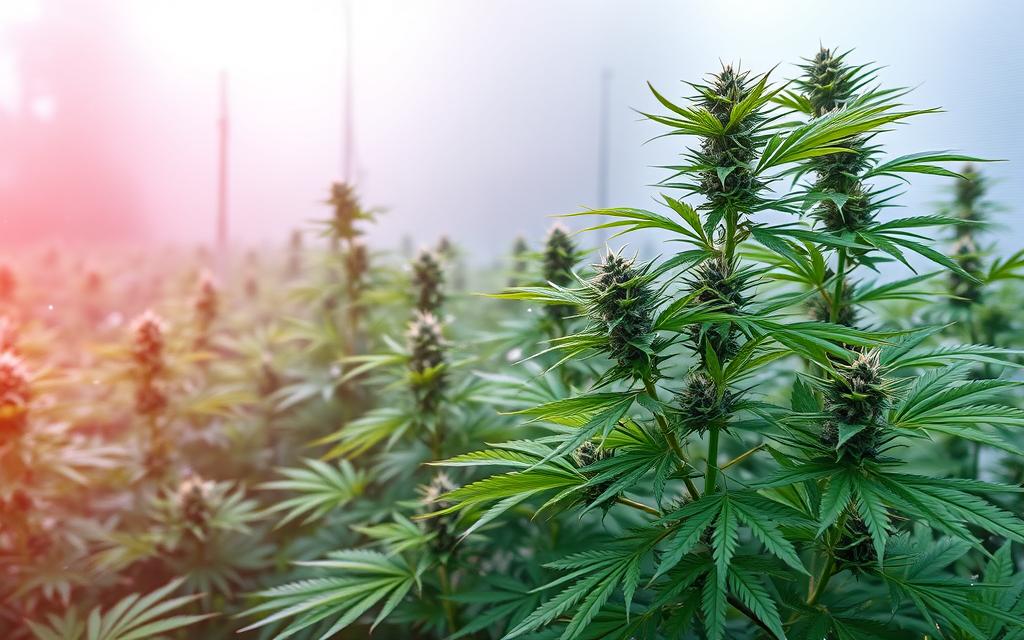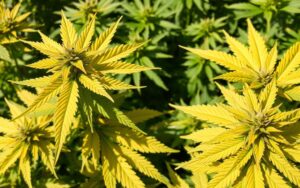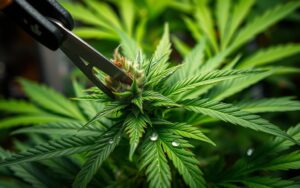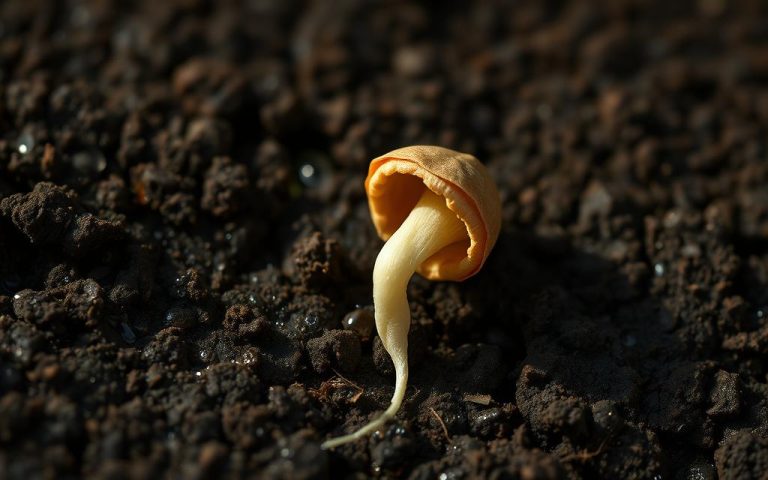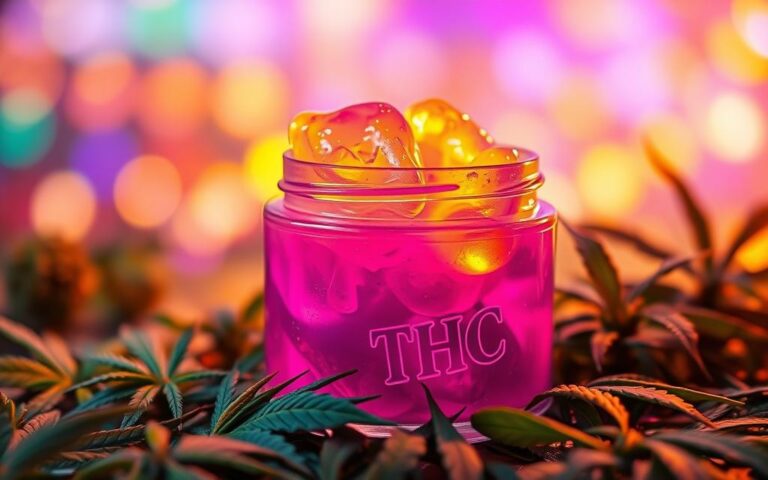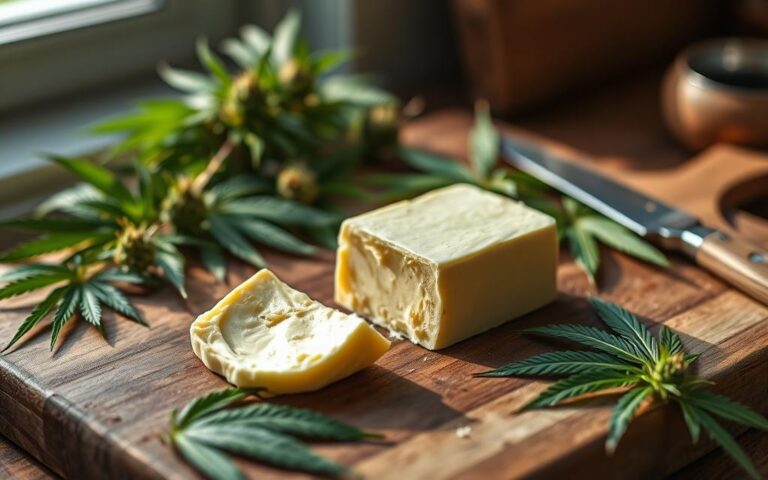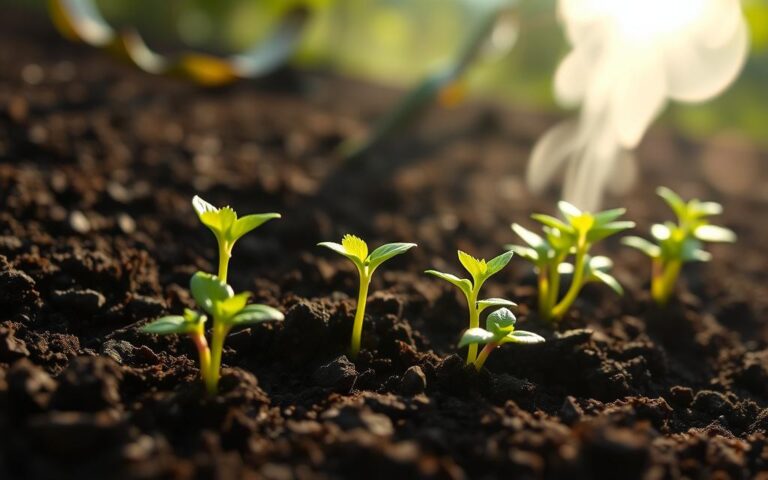Minimum Temperatures Cannabis Plants Can Tolerate
It’s essential to know the minimum temperatures cannabis plants can survive to get the best yields. These tough plants can handle cold well, but we must know the lowest safe temperatures. For example, they can survive as low as 32°F (0°C). Yet, they can still grow at 60°F (15°C), but we must be careful.
Understanding how cold affects cannabis is key, especially in cold-prone areas. When nighttime temperatures fall under 50°F (10°C), it stresses the plants. This stress can harm their growth and lower bud quality. If this happens too much, it can permanently damage them. This shows why it’s crucial to care for them well and use the right growing strategies for their cannabis temperature tolerance.
To protect plants from winter’s cold, choosing cold-hardy strains or using coverings can help. Knowing the limits of what temperatures cannabis can handle helps growers succeed. This knowledge leads to healthier plants and more harvest.
Introduction to Cannabis Temperature Tolerance
Cannabis plants have a specific cannabis temperature preference that affects their health and yield. Knowing these preferences helps manage cannabis growth conditions better. In the vegetative phase, 20-30 °C (68-86 °F) is best. This supports strong growth, important for developing robust plants. When plants start flowering, 18-26 °C (64-79 °F) is better for better bud quality.
If it gets too cold, below 15 °C (59 °F), growth can slow down. Freezing temperatures might even cause lasting harm. Interestingly, some cannabis strains handle cold better, especially those from chilly places. Still, keeping temperatures ideal is key for the best growth and harvests.
Managing light and heat properly is vital in cannabis growing. Turning grow lights off in the daytime helps control heat. Turning them on at night keeps the plants warm, especially when it’s cold outside. Knowing how temperature changes affect plants helps growers create the best growing conditions.
To learn more about using male cannabis plants in growing, check out this resource. Controlling temperature is crucial. It greatly influences cultivation success and the quality of cannabis produced.
Why Temperature Matters for Cannabis Growth
The impact of temperature on cannabis growth is significant. It affects the plant’s ability to make food through photosynthesis, absorb nutrients, and stay healthy. For the best quality crop, keeping the temperature right is crucial.
If temperatures fall below 12 ºC, cannabis plants might not make it. Temperatures under 18-20 ºC slow down the plant’s growth because its metabolic functions drop. This cooling can harm the roots too, making it hard for the plant to get important nutrients like magnesium. This affects both the health and yields of the plants.
Keeping the temperature stable is key to grow cannabis successfully. A temperature controller helps keep the heat the same, protecting the plants from temperature changes. Indoor growers use electric heaters to keep warm, but they use a lot of power, between 1500-2000 watts, and can make the air too dry. More energy-efficient choices include portable oil-filled radiators or tubular electric heaters. They keep things warm without using too much electricity.
Lowering the temperature slightly, to about 16-17 ºC, in the last few weeks of flowering can make the flowers better. It increases resin production and improves quality. This shows how managing temperature is a delicate balance. It is crucial for growing tastier and more scented flowers, full of terpenes.
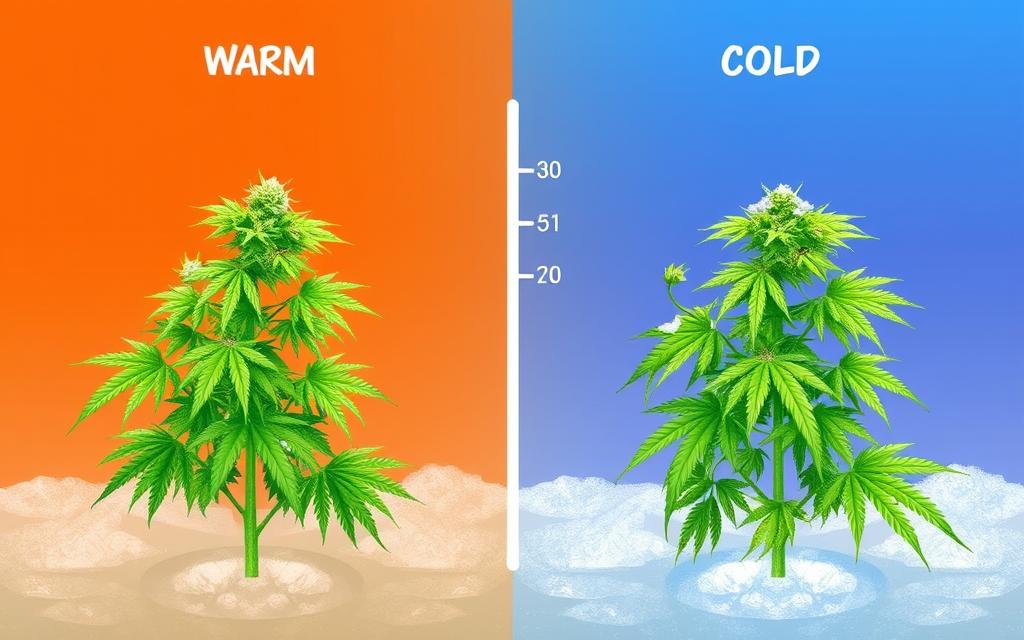
How Cold Can Cannabis Plants Survive
Cannabis plants are quite tough and can handle some cold. But they do have their limits. It’s key for growers to know the lowest temperatures these plants can take. This is especially important if you want to keep your plants healthy in cooler places. They can deal with temperatures between 10-15 °C (50-59 °F) in the day. However, it’s best if night temperatures stay above 10 °C (50 °F) for their good health.
When it gets really cold and freezes, the plants can face big problems. They might even die from the severe cold.
Understanding the Minimum Temperature Thresholds
Different cannabis strains can take different amounts of cold. Some are naturally more cold-tolerant because of their genetic background. Strains from colder areas like Canada or the Himalayas are usually tougher. If temperatures go below zero Celsius (32 °F), the plants become very vulnerable. This risks their survival. Growers need to watch the temperatures closely. Using heated greenhouses or thermal insulation helps against unexpected cold.
Effects of Cold on Plant Growth and Health
Cold weather can harm cannabis in many ways. Signs of cold stress include wilting, leaves turning yellow, and smaller yields. The cold slows down growth and makes plants more likely to get sick. Water colder than 10-15 °C can also reduce how well plants absorb nutrients like phosphorus. This makes their health worse. Fast drops in temperature can shock plants. This stops their growth almost entirely. To grow cannabis in cold places well, using heat mats and insulated panels can make plants tougher.
If you’re interested in growing cannabis in cold places, look into ways to keep your plants strong during cold spells. Check out this guide on growing cannabis in cold for great tips.
| Temperature (°C) | Growth Response | Nutrient Absorption |
|---|---|---|
| 10-15 | Tolerable for growth | Reduced absorption |
| Below 10 | Growth slowdown | Severe hindrance |
| Below 0 | High risk of damage | Stagnation of nutrient uptake |
Signs of Cold Stress in Cannabis Plants
Every cannabis grower needs to know about cold stress signs. It greatly affects the plant’s health and how much it yields. When the temperatures drop, cannabis plants show they are struggling. They may have leaves that change colour, become wilted or brown, and grow more slowly. This slow growth is worrying, especially during flowering time. That’s when the plant makes cannabinoids and terpenes, which are important.
Visual Symptoms to Look For
Growers must watch for signs like leaves curling and plants not growing tall. These signs show the plant is not happy. They could lead to less harvest in the future. Some plants might show pretty colours like purples in cold. But this isn’t good. Keeping an eye on these signs helps take action quickly. This way, you can stop serious damage from happening.
Long-Term Consequences of Cold Exposure
Cold can seriously affect cannabis plants over time. Constant cold can mean less quality buds and smaller harvests. These plants may get sick more easily. After a frost, they take a long time to start growing normally again. This makes the wait for harvest even longer. The taste and strength of the plant can suffer a lot. That’s why knowing about cold stress in cannabis is so important. If growers understand and tackle these problems, their plants can do their best.

